- Blog
- Student Blogs
- Advocacy steps for plant-based school food
Advocacy steps for plant-based school food
by Margot Blanco and Morgan Greenlaw, Palo Alto High School students
Donate Now!
Your contribution will benefit Friends of the Earth.
Stay Informed
Thanks for your interest in Friends of the Earth. You can find information about us and get in touch the following ways:
Why a Plant-Based Student Campaign?
Hello! We are Margot and Morgan, two rising seniors at Palo Alto High School who are passionate about creating an environmentally conscious community by advocating for plant-forward eating.

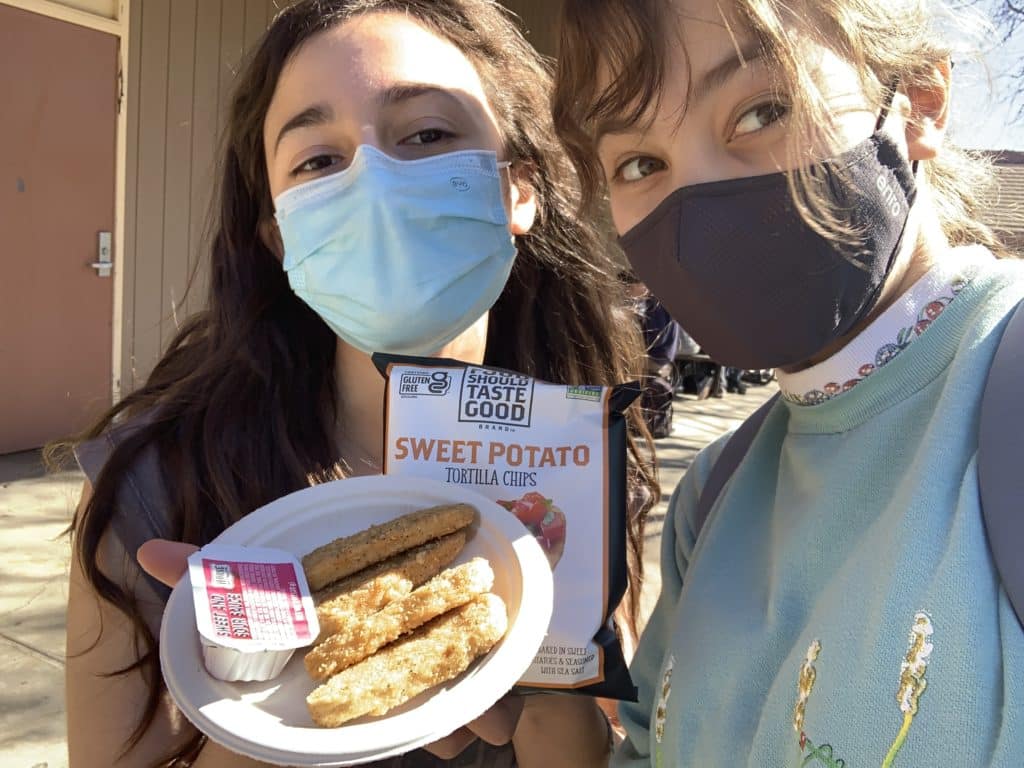
We shifted to a plant-based diet after learning about the ethical and environmental impacts of animal agriculture and wanted to expand our impact. Eating a plant-based lunch is a small habit that can make a big difference in reducing greenhouse gas emissions, especially if it’s scaled-up in a school cafeteria. We launched a campaign to increase the number of plant-based meals offered in our cafeteria and raise awareness about the benefits of plant-based eating to improve our climate impact.
After months of petitioning for plant-based meals and communicating with our school’s nutrition services, we accomplished our primary goal — our cafeteria at Palo Alto High School went from offering limited plant-based options (only 2-3 times per month) to serving plant-based meals every day! We faced obstacles and administrative apprehension along the way but kept working hard and pushing for what we believe in. If we can do it, then we believe any passionate student can advocate for systemic and environmentally conscious changes in their school cafeteria.
Our Campaign
Step 1: Student petition and call to action
In January 2022, after summer planning, we turned our ideas into actions. To gain support on campus, we released an online petition and began collecting student signatures during lunch. In three months, we gathered over 360 signatures, surpassing the average number of students who eat at the cafeteria every day. Having gathered enough signatures to gain attention, we met with our school district’s nutrition services director to discuss implementing more plant-based options.
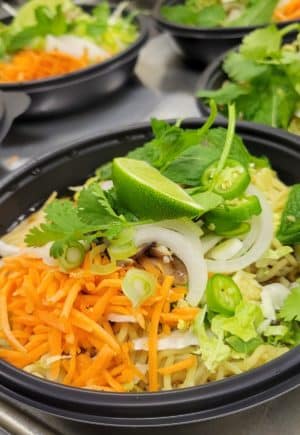

Step 2: Student taste testing and engagement
We realized that the best way to engage students with plant-based meals was to see what students actually liked. We worked with nutrition services to hold a taste testing event featuring vegan nuggets one day during lunch. We set up samples outside the cafeteria so more students could try the nuggets, and most students responded positively, indicating that it could become a popular menu option.
The nutrition services team supported our efforts to inspire students by creating innovative plant-based meals such as grain bowls and pho, not just plain salads, which is often the only vegan option in a school cafeteria. After these new items rolled out, we noticed a huge increase in orders of these meals. It’s clear that if you really want to get students excited about eating plant-based food at school, it’s important that your cafeteria is willing to incorporate a variety of new meal options.
Step 3: Marketing and promotion
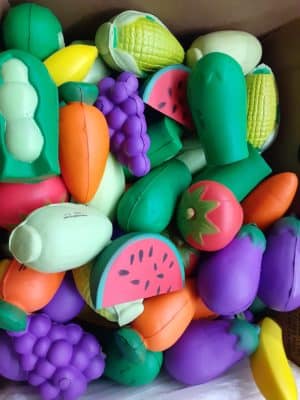
It’s also really important to engage students directly. Our student team held events to engage our peers with the new plant-based options, and even had a few incentives to encourage students to try the food. For Earth Week, we organized a student pledge that encouraged students to eat one plant-based meal a day for three days and DM us pictures of their meals on Instagram to win a prize (a fruit-shaped stress ball provided by nutrition services). We emphasized that an easy way to accomplish the pledge was to order the plant-based meal from the cafeteria. On the day we organized the vegan nugget sampling, we told students that if they ordered the vegan meal in the cafeteria they could get a stress ball. Many students came back to get a prize, and noted that the vegan meal was tasty!
Step 4: Small steps and pilot programs
The nutrition services team proposed creating a specialty bar every other week which would offer non-vegan and vegan options that students could choose from, an idea we supported. We helped advertise the new vegan option through announcements and social media, and by offering taste tests at lunch. The cafeteria first offered a serve-yourself tostada bar, but this approach left smaller quantities of food for those who did not sprint to the lunch line. After raising this issue with the cafeteria staff, the bar was revised to offer pre-portioned meals with both protein options that provided every student with equal quantities of food.
Step 5: Creating real changes
After months of positive student feedback, the cafeteria started making more plant-based meals available throughout the week, like BBQ Jackfruit Sliders and a Green Goddess Bowl with crispy tofu. Finally… the cafeteria began offering one plant-based meal every day! This was especially exciting to us because we are the first school in our district to have this!
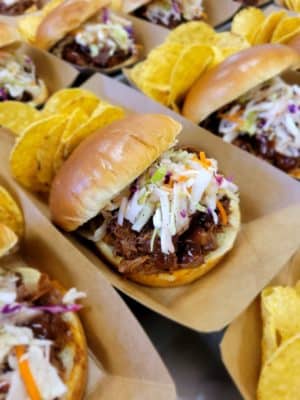
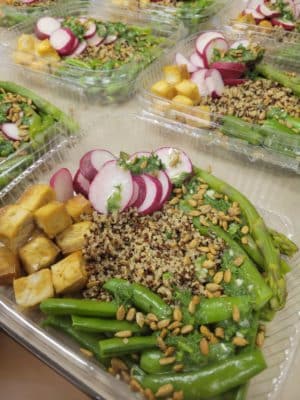
Links to articles:
- Jan. 21 – Students petition for plant-based lunch options (The Voice)
- Feb. 6 – Students push to get more vegan meals on the school menu (Anthro Magazine)
- Mar. 20 – Slow start for vegan lunches while campus food service surges (The Voice)
- April 1 – More plant-based school lunches available (The Campanile)
- May 5 – InFocus, Paly’s broadcast organization, filmed a segment on our campaign: InFocus News | Thursday, May 5th, 2022
- May 17 – Plant-Based PALY Initiative — Acterra
Our key takeaways
Partner with a well-established organization as a foundation for your campaign. We partnered with the Factory Farming Awareness Coalition (FFAC) and Friends of the Earth (FOE), who provided useful information and tons of resources for our campaign, as well as one-on-one mentorship and guidance. We turned to FOE with our concerns and received helpful ideas for solutions that advanced our process. Later in the school year, FOE awarded our nutrition services team a micro-grant along with support from a technical consultant to help with menu planning and buying more plant-based ingredients.
Nutrition services’ support is key to making progress. Always make it clear that you’re on their side—you want to help them provide nutritious food for students, and you need to understand the barriers, challenges and goals of their team, too. Try to be as flexible as possible in adjusting to their timeline and resources. Be kind, and don’t give up. It may sound cheesy, but the most important aspect of working with your school administration is to always make it clear that you are on the same side as the nutrition services staff. This is a cooperative campaign where you are trying to help them make the cafeteria a place where more students can get nourishing food that aligns with their values.
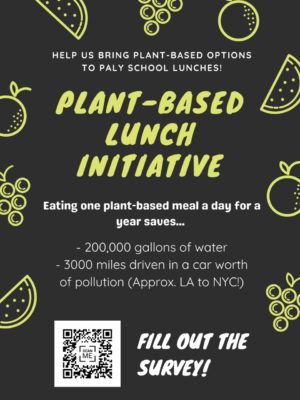
Let nutrition services know how much you appreciate their efforts! Adding plant-based meals to the menu on a tight budget can be challenging and time-consuming, so make sure to regularly thank the staff for their hard work. If email isn’t proving effective, go to the cafeteria in person to speak with the staff. Make sure to keep thanking them for all the hard work they do—providing hundreds of lunches every day is no small feat. At the end of the school year, we set up a “thank you” poster on the cafeteria wall where students express their gratitude toward the staff. This creates a meaningful relationship between students and the cafeteria staff, strengthening future communication.
Student voices matter. Students can help convince the cafeteria that having a plant-forward menu is a much-needed change—that student and planet health should not be pushed aside. One way you can do this is through a petition, which demonstrates the number of students that want change. Use all the platforms you have. Make an Instagram account and post regularly, whether that’s every day or a few times a week. Create some joint posts with your school’s most-followed account; we partnered with the student government account. Put up posters that clearly state your purpose and provide easy ways to help—we added QR codes to sign our petition.
Keep in mind how students at your school get information. Submit announcement requests to be on your school’s loudspeaker. Don’t be afraid to approach individual students and talk to them about the campaign. Ask them what they would like to see in the cafeteria. Reach out to clubs at your school and ask to give a short presentation. Our school’s news sources reported on our efforts several times throughout the year. We were even featured in an article by Acterra, a local environmental organization!
Have a vision for what you want, and don’t give up on it. There should be a driving force behind your work that is fueled by passion for a better world, and that will keep you going even when obstacles occur. We kept pushing for four months, from January to April, until the cafeteria was able to provide a daily vegan meal. We persisted, because we knew our school was capable of change. When we encountered administrative apprehension, instead of pausing our work, we created a petition to demonstrate student support. And when students weren’t choosing the new plant-based meals, we advocated for the benefits of plant-based eating through interviews and posters, and offered vegan samples to engage students with the meals. We hope that our persistence inspires others to do the same.
